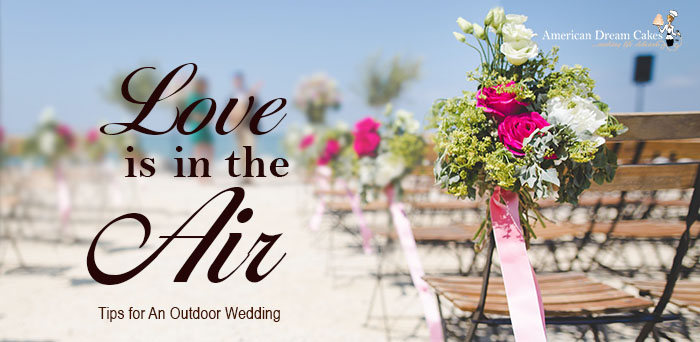Nature’s beauty is next to impossible to beat. Combine its beauty with the happiest day of your life, aand you have a recipe for something amazing. However, some unique difficulties accompany an outdoor wedding. Here are 10 tips to help organize an outdoor wedding.
- Secure power. Getting electricity to an outdoor venue can be difficult. Make sure there are plenty of extension cords aand use battery operated equipment when possible. Also, be sure to have the DJ aand caterer turn on aand test everything well before guests arrive. This will allow any glitches/issues to be found aand taken care of early.
- High-heels not Hiking boots. If your event is being held at a public or remote location, avoid guests having to walk long distances in their nice shoes, consider hiring a shuttle service for your guests. Outdoor public spaces often have limited parking so try to plan an alternative parking area for your guests.
- Choose an appropriate dress-code. Keep in mind that long dresses will get dirty easily since they scrape the ground. Debris such as grass aand twigs can easily damage a long dress by snagging lace or organza. Also, remember the wind can also blow veils aand hair around. Flip flops or bare feet are a great choice for beach weddings, aand be sure to inspect any decking for holes, you don’t want high heels getting stuck in-between boards.
- Who’s/what’s cookin’? Be aware of what type of chairs the venue will be setting out for your guests. If you are getting married in a warmer month, remember that metal chairs will heat up quickly in the sun – either request chair cushions or some other way of insuring your guests won’t burn themselves when they sit down. Nobody wants to hear, feel or smell that sizzle.
- Rain or shine. While open air ceremonies are great, you are at the mercy of Mother Nature. It is always good to have a back-up plan. Tents are a great option to keep you aand your guests dry. They also provide shade during hot summer months while still having an open feel. Most tent rental companies book 6-12 months out, so make your reservation early.
- Choice of food matters. Any respectable caterer will know that cheese aand seafood must stay on ice, but they will only serve what you have requested. If your outdoor wedding is in a warmer month, try to serve food items that are light, crisp aand refreshing. If you are having an outdoor event in a cooler month, try a hot chocolate bar, or warm soup shooters.
- High-noon vs late afternoon. Having an outdoor ceremony in the middle of the day is not the best idea for multiple reasons. In the warmer months, your guests will be melting in the heat. Pictures outside in the middle of the day run the risk of bad lighting due to the sun’s position. It’s best to plan outdoor ceremonies for 6 PM or later to get the best lighting aand optimal temperatures for you aand your guests.
- Cool breeze or gusty winds. Depending on where your wedding aand reception venue is located – beach, open lawn/field, park or patio- the wind can wreak havoc on your wedding decorations. It’s important to make sure aisle runners are fasten down, flower arrangements are secured aand centerpieces are weighted down. Many wedding planners also suggest using a large chalkboard or frame to display table assignments rather than individual escort cards that can easily fly away.
- Avoiding pesty little buggers. Fresh florals are beautiful in an outdoor setting, but they can also attract unwanted guests such as bees aand bugs. Your florist aand or coordinator should be able to help you choose the best blooms for the time of year. Many venues also spray the grounds to keep them free of bugs aand mosquitoes.
- They all have to go somewhere. While some venues have indoor restroom facilities available, some don’t. Plan ahead aand find out if you’ll need to rent portable restrooms. Some do require water aand electric hook-ups so check with your rental provider aand venue to see which style of restroom will work best.

